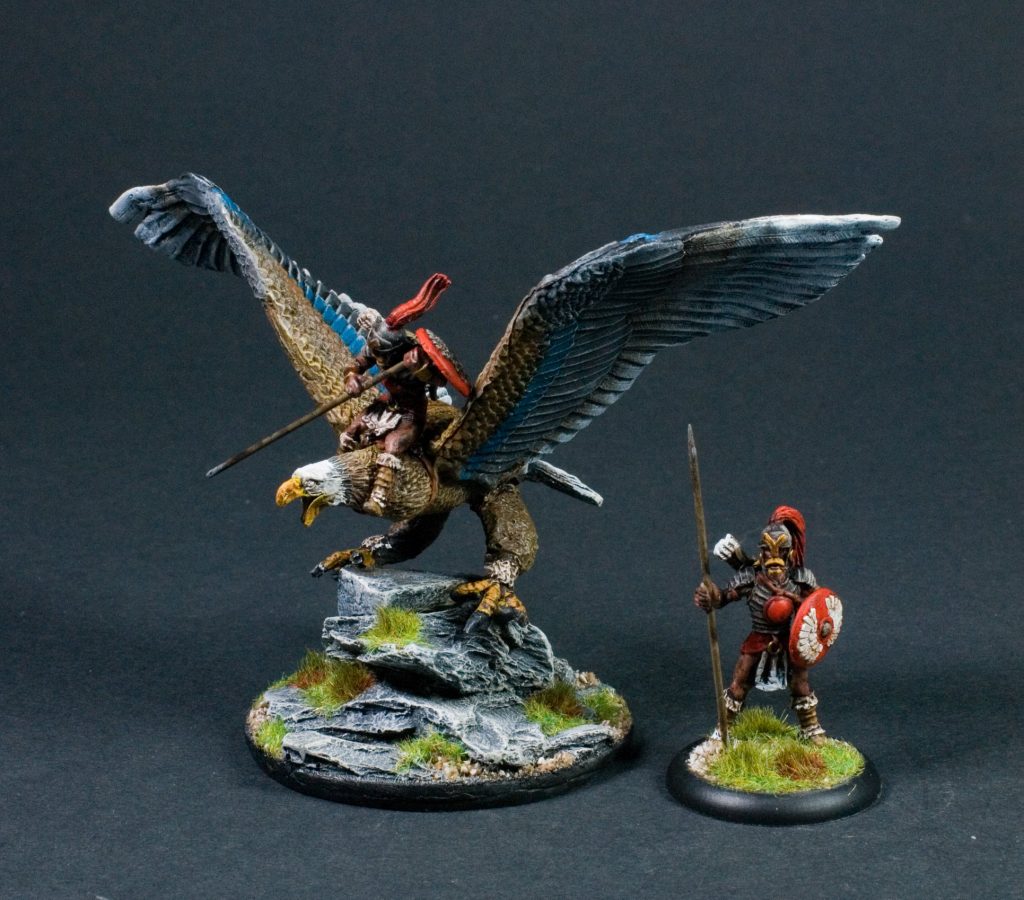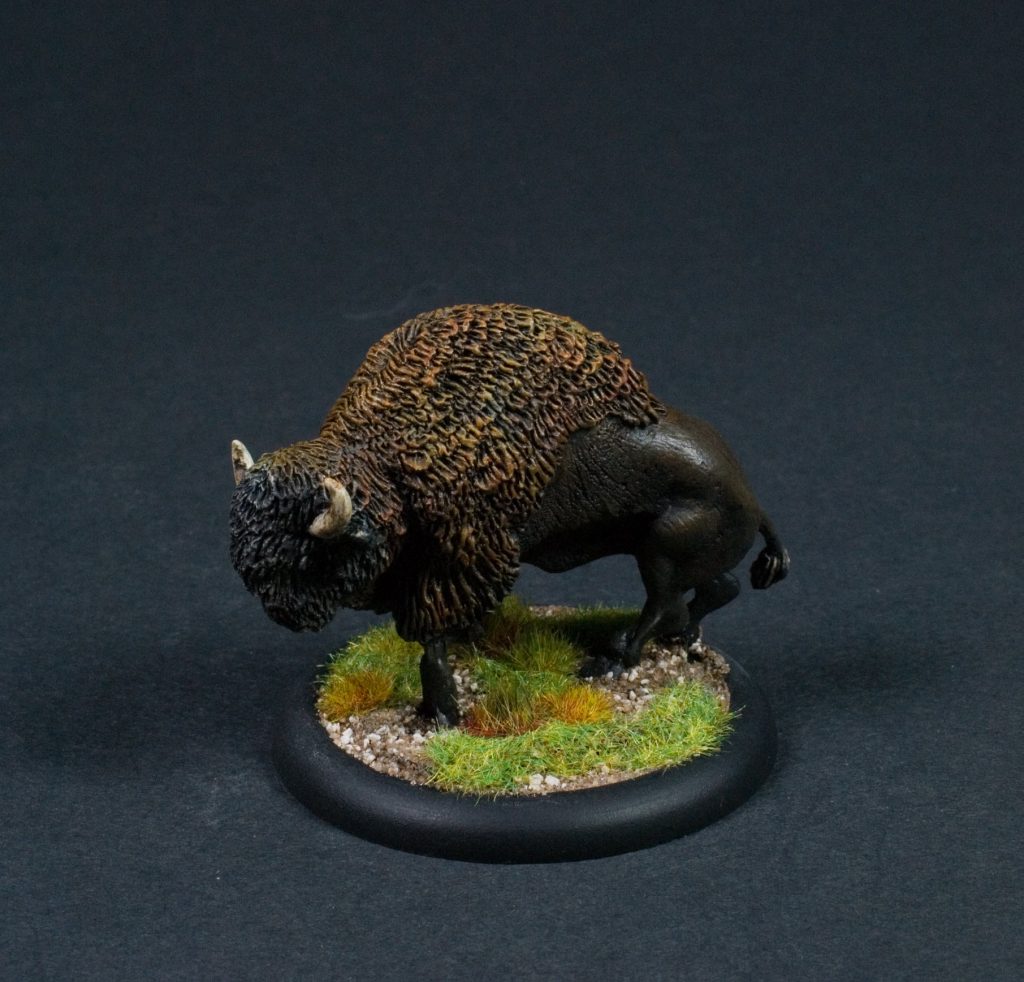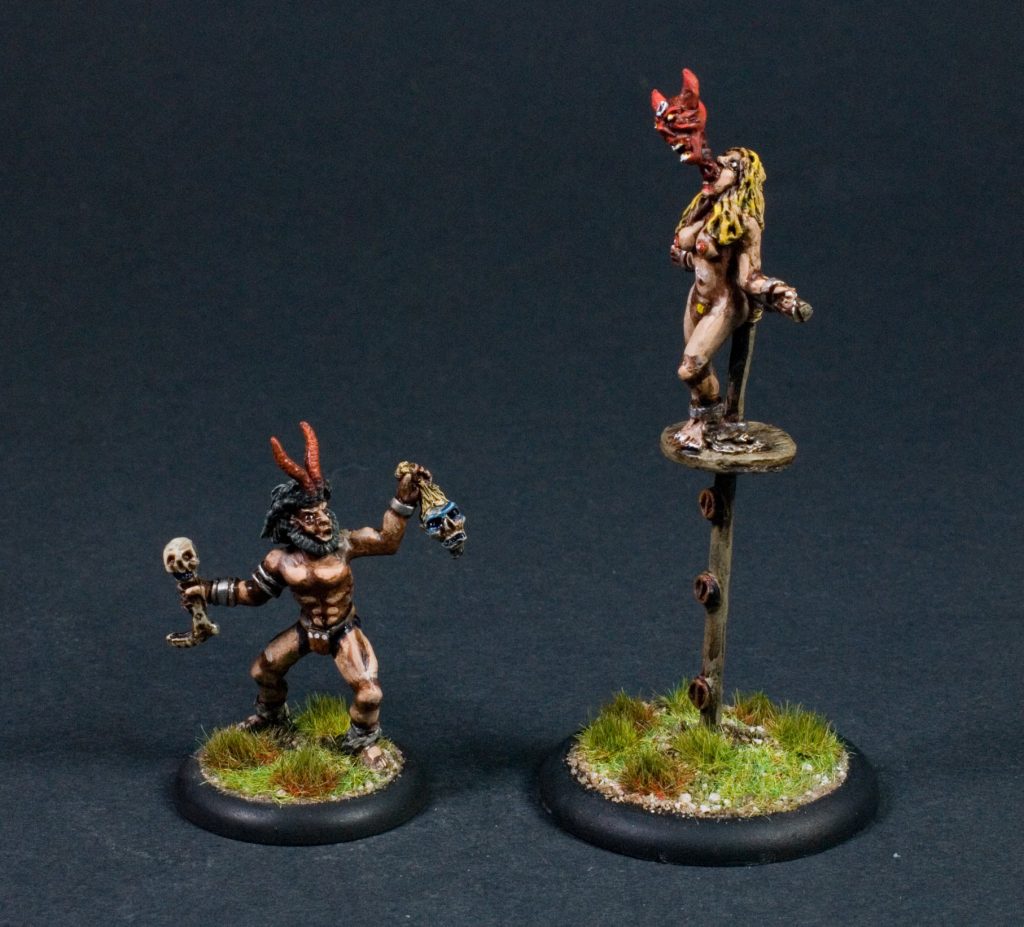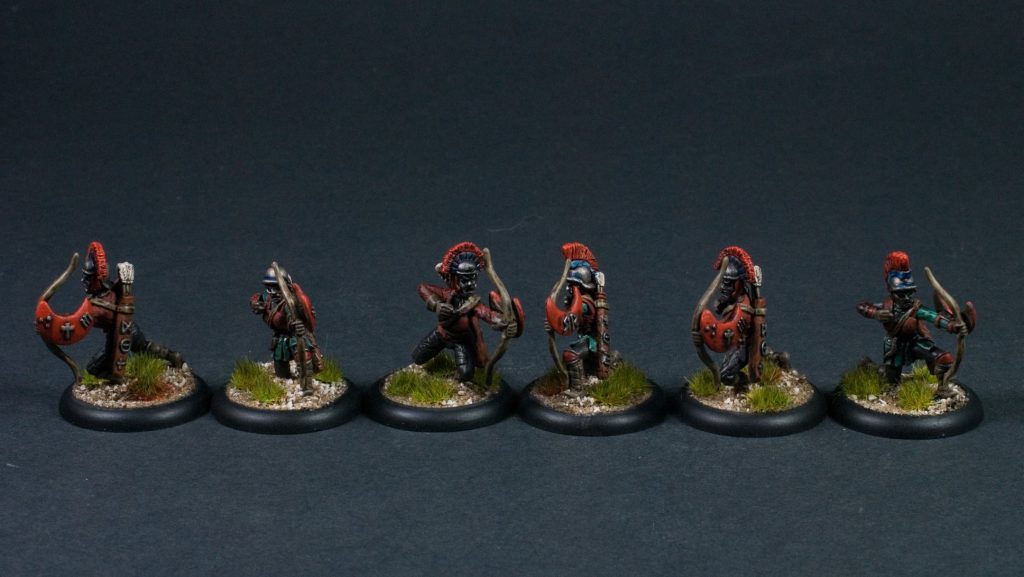Welcome to a new issue of the Journal of Runic Studies, the premier Malkioni publication for studies into the nature of Glorantha. If you haven’t subscribed yet, please consult with the spirit bound to the appropriate electronic page.
God Learner Sorcery
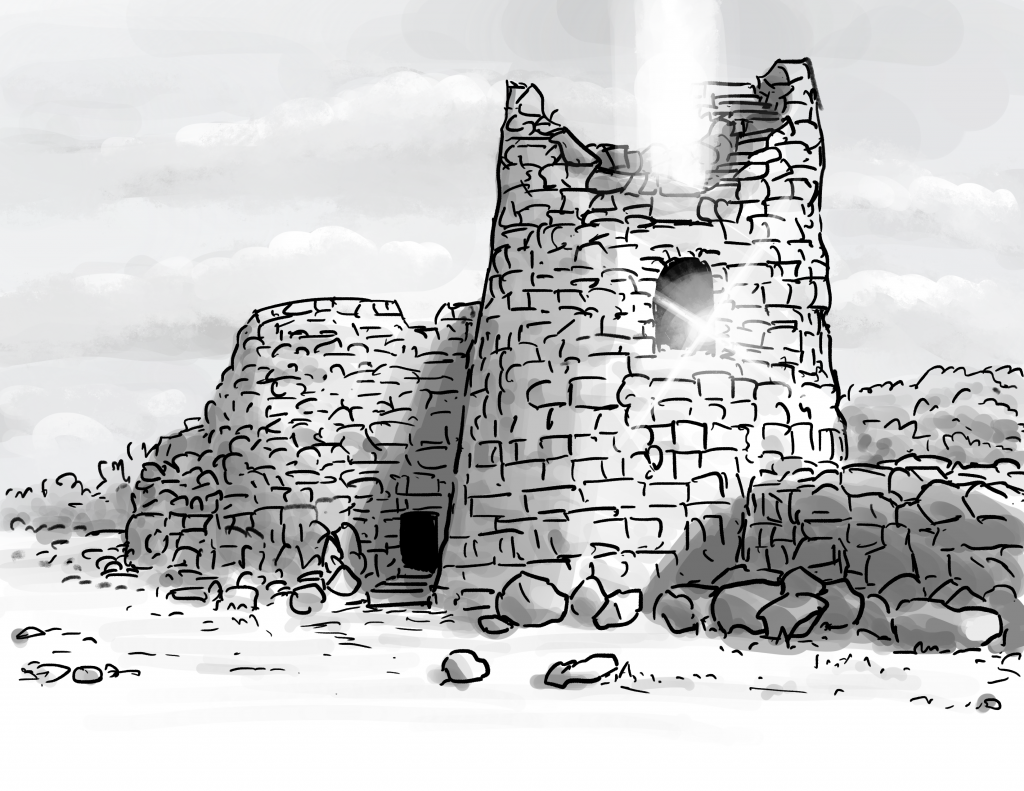
Here is what us God Learners were up to this week.
Episode 9: Nomad Gods (Part 1)
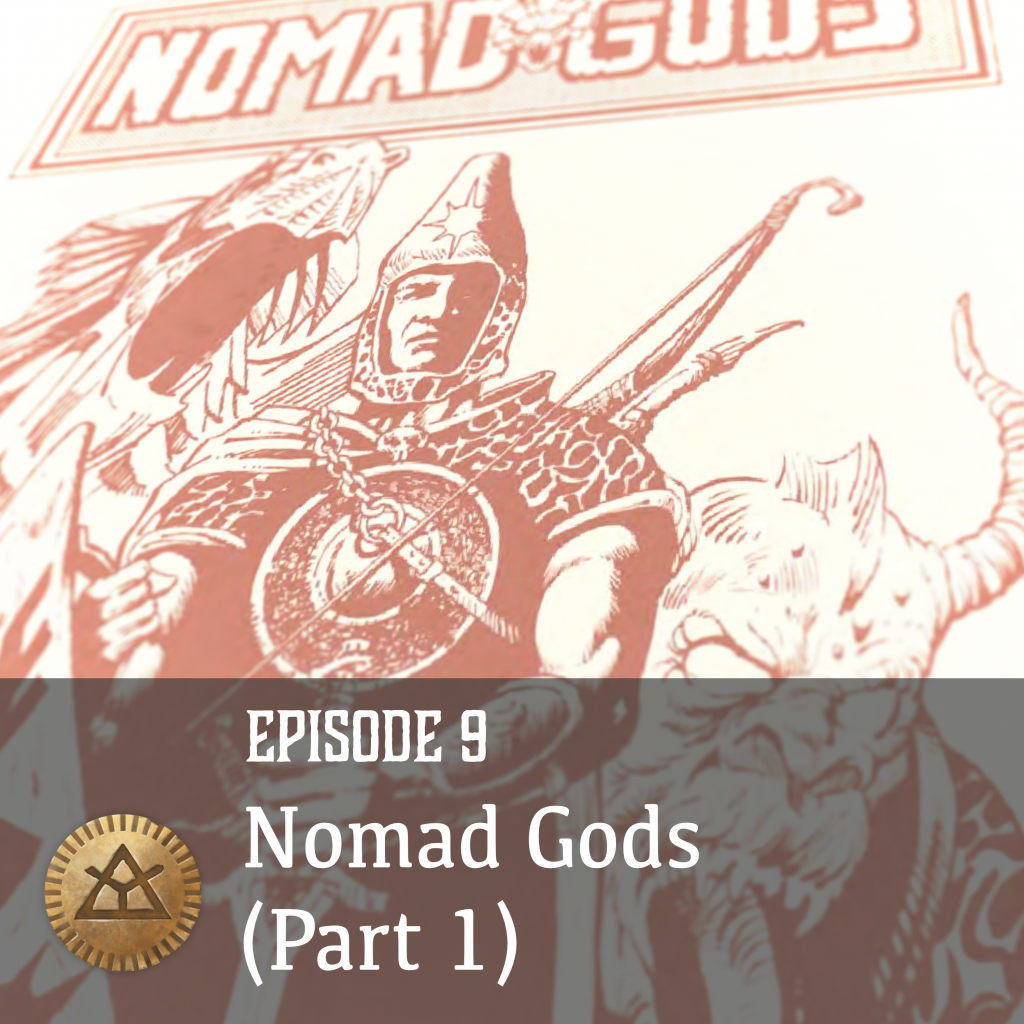
Episode 9 of our podcast is finally out! We welcome Chaosium’s David Scott again to talk about the 1977 board game Nomad Gods, after the usual news section where I do some marketing and Joerg gives some shout outs. Cited as a “foundational text” for Glorantha, we flip through the Nomad Gods rules booklet while David provides anecdotes, historical context, and revelations!
Chaosium News

Here are this week’s Chaosium news!
Runequest Starter Stream Episode 04
James and his players are wrapping up A Rough Landing! I’m behind by one episode so I’m still catching up, without anything interesting to write here.
Cults of Prax, One for the Ages…
It’s another one of Rick Meints’ “Out of the Suitcase” articles! I love those. This new one talks about Cults of Prax, its various printings, and some peek at production material, among other things. For instance, Chaosium’s archives apparently still contain the original art for the second printing:
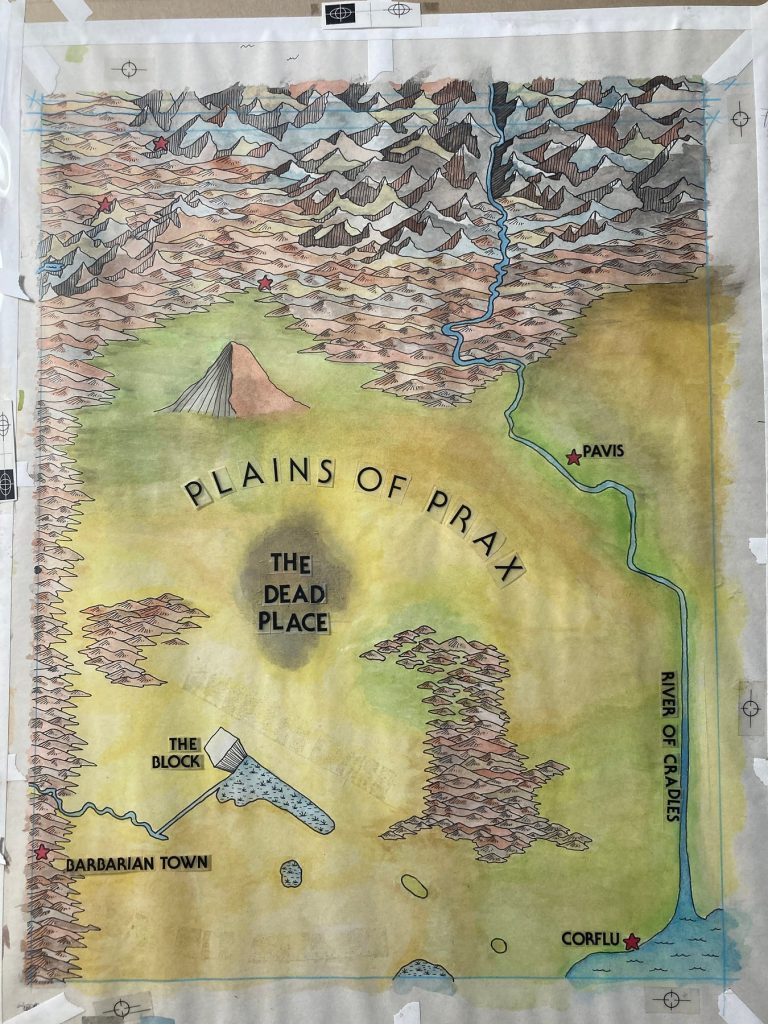
There’s quite a few nice archive photos, fun anecdotes, and interesting information in that post so definitely check it out. There will be a lot of similar information in Rick’s upcoming “Meints’ Index to Glorantha” 3rd edition, which is supposed to go on sale “soon”.
William Church, who did several of the iconic RQ2 maps (including the one above) is still alive and well, but Rick mentioned on Facebook that “he wasn’t much of a gamer back in the day, and still isn’t now.” Another bit of good news is that Chaosium has approval from Church to use his “Dark Troll Jokes” from Wyrms’ Footnotes for their Redbubble merchandise… although of course it doesn’t mean we will necessarily have these jokes on a t-shirt any time soon.
The Chaosium Con Auction Teaser
Speaking of Rick Meints and interesting artifacts, here’s Rick teasing the stuff we might see at the Chaosium Con action! Plus: what the “Chaosium archives” actually look like!
Jeff’s Notes

Jeff Richard, the current mastermind on everything Gloranthan at Chaosium, is often posting notes and thoughts on the RuneQuest Facebook group. Here’s our curated list from the past week. A partial archive of these sources is compiled on the Well of Daliath.
Uncoling and Other Hsunchen
This bit about the Hsunchen is, I think, some new text, possibly from the upcoming Cults book:
“Through the Golden Age, most of the world had taken shape, especially the division between gods and lesser beings. The gods and spirits were able to change their form, but mortals were not. At first life was wonderful and perfect, but eventually many mortals lost contact with their animal selves, thereby losing touch with Nature and succumbing to the vices of agriculture, politics, war, priests, and wizards. Those people were doomed, for all those things proved useless in the Gods War.
When Death came into the world, the remaining people followed the Horned Man and found Hykim and Mikyh again in the Spirit World. Hykim and Mikyh taught their descendants how to survive in the world, how to be reborn again, and what new ceremonies were needed to preserve the world.”
Hykim and Mikyh are draconic figures who are considered as ancestors of all beasts. It’s unclear (on purpose) whether this couple really exists, or whether they’re one hermaphrodite entity with two gendered aspects. Any time you hear about some bestial deity, like Eiritha or Storm Bull, there’s a good chance Hykim or Mikyh show up in the lineage.
Anyway, we’re here to talk about the Hsunchen. These are generally speaking tribes of primitive people who are strongly associated with an animal spirit. They follow a sort of neolithic way of life, have some animal buddy (a “beast brother” or “beast sister”), some shapeshifting magic, and are big with nature spirit worship. The most fun Hsunchen in Dragon Pass are probably the Telmori, who are basically Chaos-tainted werewolves. I’m running a scenario about them for Chaosium Con! (hopefully I’ll get to write it down and publish it)
The Hsunchen believe that after death, their souls are reborn into their own tribe, failing to distinguish between the human and animal members. Death rituals reflect this belief but vary greatly from tribe to tribe.
From this point, Jeff uses the Uncoling to illustrate his points (and also reply to the original post):
That’s the key similarity among all the Hsunchen peoples – they do not distinguish between the human and the animal members of their tribe. An Uncoling herder recognises the reindeer he herds as members of the same tribe as him, distinct from all outsiders. Sure the reindeer has a different function within the tribe, different duties and expectations, but they are of the same family. The reindeer is kin in a way that the inhabitants of Easval or Zoria are not. When that herder dies, he expects he may be reborn as a reindeer.
The Uncoling are the “reindeer people”, obviously, mostly located in Fronela. You can also guess from context, but Easval and Zoria are neighbouring “civilized” region, respectively a province of Loskalm and a city in Central Fronela.
Now a Loskalmi scholar might look at the Uncoling as consisting of a bunch of humans and their reindeer herds, and on a material level they would be right. We have some 300,000 Uncolings between Loskalm and Rathorela. They survive as pastoral nomads who assemble for rituals and trade. And so on. That understanding is correct but limited.
The Uncoling know the full truth – they are the people who have remained in contact with their animal selves. They and the reindeer are the same people. The reindeer offer themselves for their kin – they agree that some number must be sacrificed so that the tribe may continue. When a reindeer is to be killed, its kin come to it, ask it for its sacrifice, and thank it for its offering. It is slain with the Peaceful Cut and its kin weep and celebrate, and no part of the offering is wasted. Meat is eaten, fur and hide used, and even the bones are used as tools. All Uncoling know that they too have made that same offering in a past incarnation and will again in the future. This is the cycle of life-death-life, the way of the Uncoling.
Yanioth Turntable
Here’s a little work-in-progress for the many character “turntables” that Anna Orlova is doing:
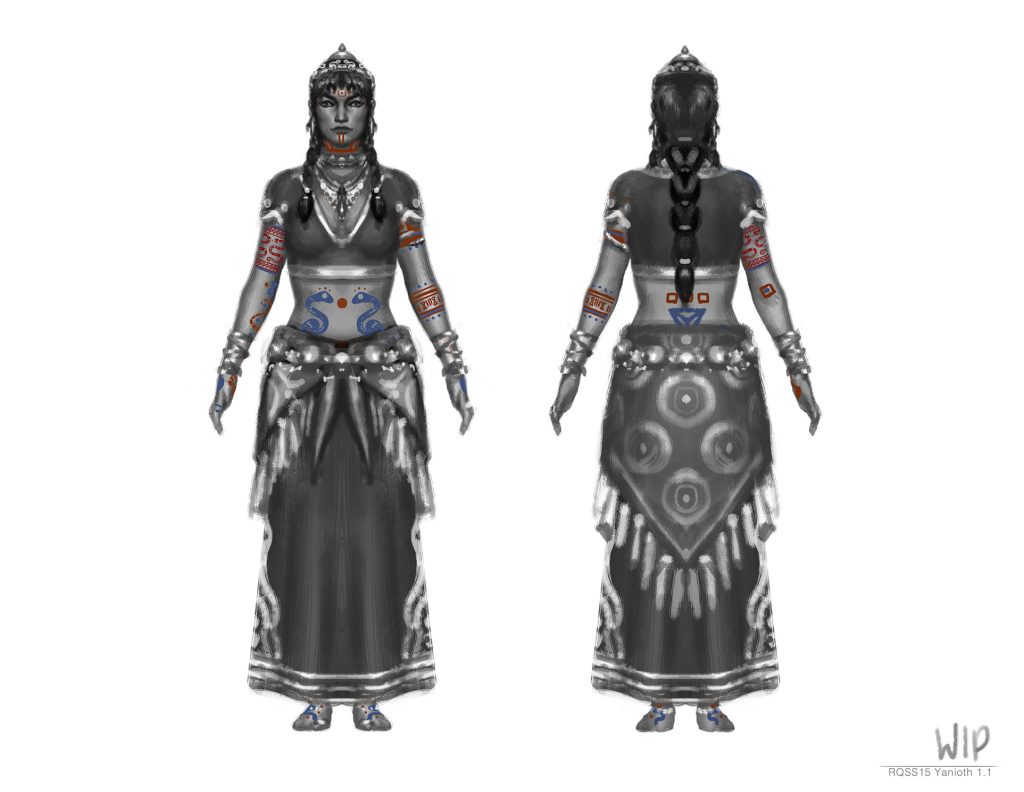
As with other similar illustrations, Chaosium is taking particular care with the character’s tattoos.
Running Kallyr’s Lightbringer Quest
This question on Facebook was asking about Kallyr’s 1625 Lightbringer Quest. In the official material, she does this heroquest shortly after the Dragonrise, but fails when Lunar superheroine Jar-eel crashes the party.
Jeff replied with some advice for running it:
Kallyr’s Lightbringer Quest takes begins at the Hill of Orlanth Victorious and travels widdershins around the Quivin Mountains along both the Hero Plane and Mundane World until arriving in Boldhome for the culmination of the ceremony.
Today’s word: “widdershins“. Basically Kallyr and her companions follow a path that forms an Air Rune over Sartar.
It occurs during Sacred Time, a period when the mundane world and the Hero Plane are in proximity – but the massive outpourings of magical energy causes the Proximate Realm to overlap with our own. So plenty of people find themselves interacting with the Hero Plane – the safest thing to do is remain in the magical safe places (temples, homes, hearths, sacred grounds, etc.) and carefully do the traditional Sacred Time ceremonies, as Kallyr and her companions skit through the strands of mythology. But for intrepid adventurers might take this opportunity to do their own mythic explorations!
You might remember that the Proximate Realm is some sort of semi-permanent magic field that makes it easier to interact with the divine.
Jar-eel is of course a skilled traveler of Arachne Solara’s web and is able to navigate herself to the climax of Kallyr’s ceremony to terrible effect.
So in running this, you need think, what is my players’ role in all this?
1. Sidekicks of Kallyr? This could be interesting, but very dangerous and also runs into the narrative problem of the players playing the sidekick. I don’t really recommend it myself.
2. Adversaries of Kallyr? Many tribes want to test Kallyr, to probe her claims and also force her into an identity. The Colymar in particular are going to put her through the ringer. Maybe they take a power from her, maybe they end up owing her a magical debt. Regardless, they likely end up being part of the climax. I’ve run this multiple times and it is pretty much always good fun.
3. Participants in the ritual that decide to going exploring. This is what I would recommend for most GMs. The players participate in the ritual and get the opportunity to explore the mythic realm OUTSIDE of a story. Maybe they meet Uleria/Tarndisi, maybe Redeye or the Hound show up to devour the Light. Maybe they wander through the Gap and find themselves in the Chasm of Lost Souls! You can go nuts with this stuff, and then return the players to either their home temple or to the culmination of Kallyr’s ceremony.
You can watch Jeff’s game featuring Kallyr’s heroquest on YouTube. According to this episode list, it starts in episode S01E26 and runs for another four episodes. In that campaign, he sort of went with option 2: the adventurers were tasked by Argrath himself to go and challenge Kallyr during her ceremony.
Here are also previous notes on Kallyr’s heroquest.
The Repopulation of Dragon Pass
Dragon Pass went through a really bad period at the end of the Second Age with the Dragonkill War, when dragons basically killed everybody in the area (although mostly the humans). What followed was the Inhuman Occupation, when Beastfolk and Aldryami and Uz had the place for themselves, free to scream at each other and fight each other without any pesky human getting in the way. But of course humans eventually came back:
Humans returned to Dragon Pass around 1250 ST. These were the remnants of the Pure Horse People of Prax. Bands of Pure Horse People and their horses wandered about Dragon Pass, although from the start they favored the hills and valleys in the southwestern part of the Pass.
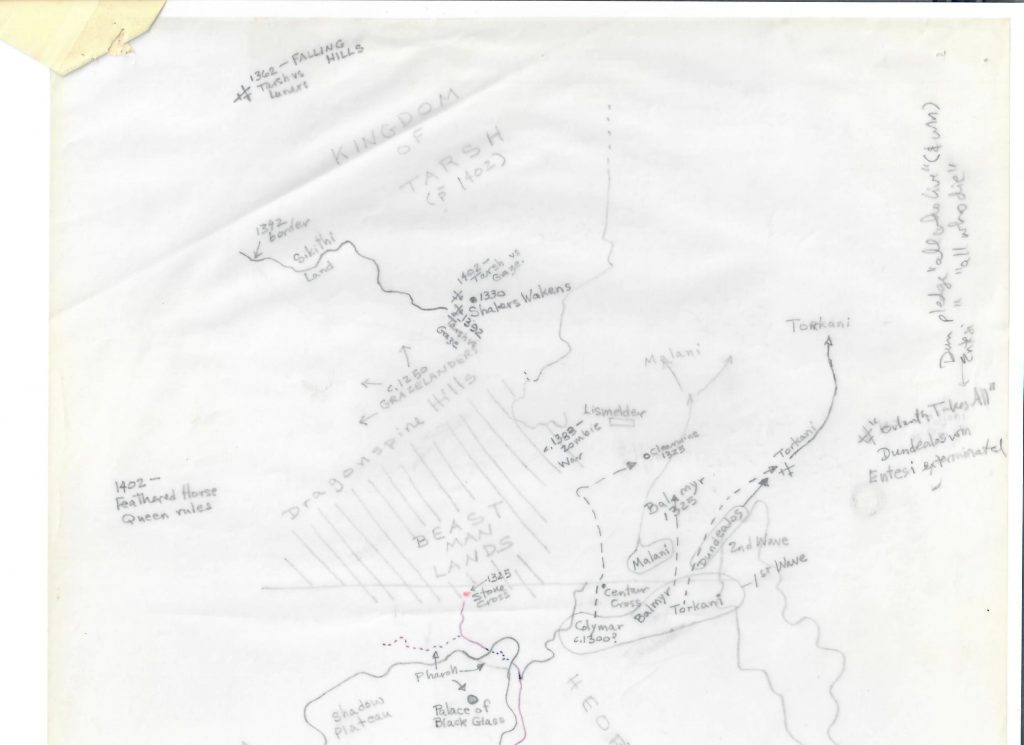
Orlanthi from the Holy Country began to settle the Pass only 50 years later. The first group were the Colymar, who settled around Clearwine. But starting in 1325, the first of several waves of settlement came from the Holy Country into southern Dragon Pass.
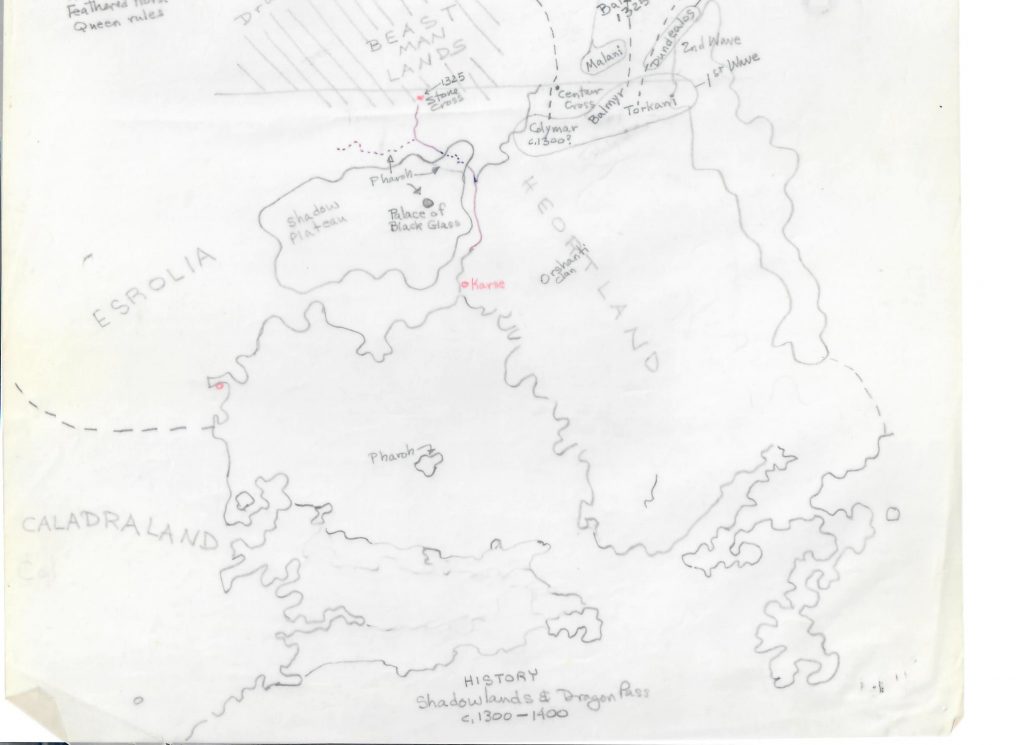
Around 1330 came the first Orlanthi settlers from Peloria in the north of the Pass. Initially this was a trickle, but it became a flood after the Daughter’s Campaigns in Saird.
The “Daughter’s Campaigns in Saird” was when the Lunar superheroine of the time forced the Orlanthi of Saird to bend the knee for good to the Red Emperor. This made Arim the Pauper go south with his people and found the Kingdom of Tarsh. Of course that didn’t do them any good, that Kingdom was conquered by the Lunars a couple generations after. So these Tarshites fled to Northern Sartar and founded the Alone Confederation. Of course that didn’t do them any good either because that was conquered by the Lunars a couple generations after too. Funny how that goes, eh?

By 1400, the Orlanthi settlers in Dragon Pass greatly outnumbered the Pure Horse People and the horse nomads were now confined to the southwest. The Pure Horse People forced some of the settlers (those in the southwest) to submit to their overlordship, but by 1450 even this was doubtful. The rise of the Feathered Horse Queen allowed a new community to form – the Grazelanders or Pony Breeders – where the queen ruled both the horse people and the farmers.
To understand the “even this was doubtful” mention, you can check out the notes on the Grazelanders back in issue #33, where we learned that the Vendref are less like the slaves depicted in the old HeroWars books, and more like a different culture that lives in some kind of symbiotic relationship with the sun worshippers.
Sartar showed up in the Pass around 1470 and over the next score of years, transformed the tribes around the Quivin Mountains into a kingdom, with cities, roads, and markets. Hon-eel arrived in 1490 and quickly the Lunars became a faction in the north.
It is now 1625, and so the southeast of Dragon Pass has been Sartarite for about half their history in the Pass. Similarly, Furthest has been Lunar almost as long as that area was Orlanthi. Places like Bagnot or Dunstop have been Lunar for a much shorter period (a little more than two generations). Thus does that resettlement era recede into the distance.
Now remember, these people are not hermetically sealed and have traded and otherwise interacted with each other for centuries.
If you have the RuneQuest Gamemaster Adventures booklet, you might know that the Colymar tribe has a couple clans of “pony riders” who worship the old Orlanthi sun god:
They called themselves the Hyalorings after that ancient solar horse-taming hero, but were Orlanthi and not Pure Horse People.
They did ride and worship horses though. Which made them stand out among the other settlers from the Holy Country.
This is where I’m getting a bit confused, since the Guide says that the Hyalorings were Pure Horse People. Maybe Pure Horse People is a general term or something. I don’t have time to dig further so I’ll just mention that Runegate, the nearest city to where these Colymar clans are, has a temple to both Elmal (their old sun god) and to Hyalor Horsebreaker, the hero Jeff mentions here.
I don’t think a Grazelander would stand out in Runegate as being any more foreign than someone from the Far Place or Esrolia. That being said, I don’t think that the Pure Horse People and the Runegate folk view each other as kin or related in any way. Sure both have cults to Hyalor, but so do the Sun Dome Temples as well.
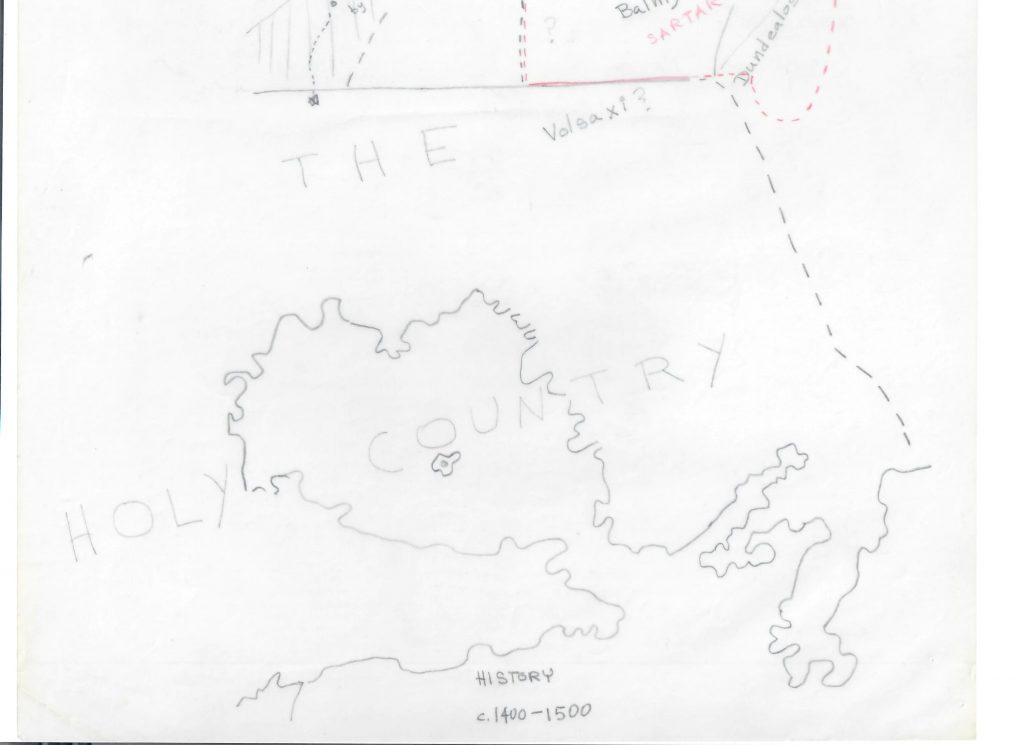
Moving on:
The Grazelanders have more than a century of close relations with the Sartarites. Half their population is Orlanthi, their royal houses regularly intermarry, and they have often fought on the same side against the Lunar Empire.
Intermarrying between Sartarites and Grazelanders is the way to get crowned “King of Dragon Pass”, so go get that spouse!
Runegate Map Notes
Jeff sometimes helps Jonstown Compendium creators by sharing his notes. For instance, notes about Runegate. They’re pretty long so I’m not going to put them all here (they will be in the Well of Daliath in a few weeks for those who need them). The highlights for me are:
- Horsetown is a pasture northwest of Runegate with a wooden palisade around it. It has a minor Issaries temple (that is, a market) and a shrine to Elmal. Horses from there can be purchased at the weekly Runegate market or during an annual summer fair.
- Runegate’s stone towers and buildings were destroyed during the Lunar invasion of 1602. There are now more timber structures than usual.
- The East Gate is dedicated to Asrelia and is called “the Luck Gate”, because it’s the only stone one that survived the 1602 Crimson Bat attack.
- There are several recently built temples (most probably recently rebuilt?). These include the usual Orlanthi deities, but, of note, there’s a temple (or shrine) to Elmal the Sun Horse, and to Eurmal. A Storm Bull shrine was built after the Chaos Flood of 1610. And of course there’s a Humakt temple called the House of Death, which isn’t surprising given the proximity of the undead-filled Upland Marsh.
- There is also a Seven Mothers shrine which, unlike the one in Jonstown, is still standing. It’s not maintained by the Lunar Empire anymore post-Dragonrise, but it’s supported by travellers coming from Lunar Tarsh.
- As usual there are several inns, including a Geo’s.
- Jeff’s write-up for Runegate includes a couple of recent events, probably coming from some adventure book in progress.
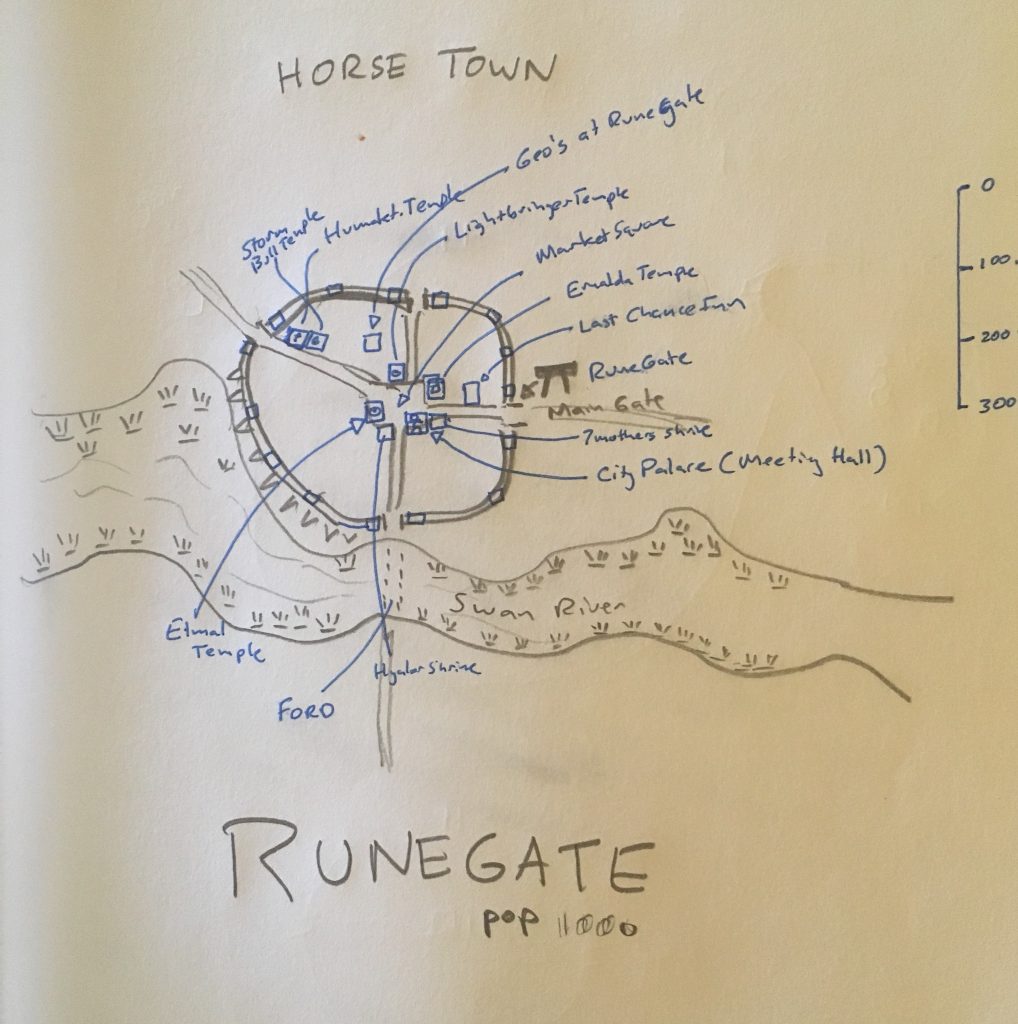
I like to get more data points for my spreadsheets, so here’s the cultist make-up of Runegate:
150 Orlanth
150 Ernalda
50 Issaries
75 Humakt
25 Storm Bull
150 Yelmalio
10 Gustbran
50 Others
Heroquesting and the Hero Wars
Jeff talks about the main two types of heroquesting people do around the Hero Wars:
1. We do what we have always done. We stick to the path and don’t leave it. There’s strong societal and cult pressure to do that for everyone. Orlanthi, Lunars, Praxians, Malkioni, whoever.
2. We dive in deep. This is for the desperate, the lost, the mad, and the would-be-gods. In other words, for the heroes. There’s strong societal and cult pressures against that for everyone – even if successful, what you experience may change things dramatically.
I had asked in a previous Journal issue why people in Glorantha don’t generally heroquest outside of old strict rituals (category 1). I figured that it was maybe because only heroes and adventurers have the courage to do so, because the unknown is scary and there’s a long tradition of frowning upon it since the end of the Second Age. It looks like it’s not too far off:
Until relatively recently, the door to category 2 was generally closed. Sure we can name the Red Goddess, Red Emperor, Belintar, Hwarin Dalthippa, Hon-eel, Feathered Horse Queen, Sir Ethilrist, Sartar, and a few others. But they are rare – usually no more than one or two such people a generation.
The Hero Wars are terrifying because we open wide the door to category 2. Argrath and the Red Emperor both encourage this. We have scores of people doing deep dives into the Hero Planes – including player characters. We have heroes that have gone so deep they are rewriting the strands – Jar-eel and Harrek. And with this, the Lunars really don’t have much of a comparative advantage.
Although the Lunars have had several phases of wild experimental heroquesting (particularly in Wanes 0-5), they generally stick to what they know. Admittedly, they have explored some areas that others have largely ignored, but within that framework, usually stick to what they know.
Now Jeff provides some insights for running heroquests and choosing heroic boons:
Category 1 heroquests more or less just reinforce what we already know. And the boons are usually along the lines of existing cult magic and abilities. That’s useful and good, and you can end up with cool powers and curses like those of Hofstaring Treeleaper or Vamastal Greyskin.
But it is Category 2 where the real excitement happens.
What I see raised so often in discussions – “oh how do I fix some aspect of my cult that I don’t like” – occurs so rarely as to be a statistical blip. Heroquests change cults, but almost never because someone sets out to do that. Instead, cults change because heroquesters are directly interacting with the mythic realm and have different experiences than the received lore. And sometimes those new experiences result in very useful magic or insights – which then gets taught to the cult.
And in that manner, cults change even if the gods do not.
And this brings me to the backwards reasoning that a lot of people apply when discussing heroquests. They assume the boon and the experience was planned. That’s usually the case when the heroquest stays within the path of what we have always done.
But the bigger quests – where the heroes dive deep into the realm of myth – the boons and experience result from that deep dive into the unknown. They aren’t planned beyond a Hail Mary pass. Alakoring was desperate in his war agains the EWF and he traveled previously unknown paths that had him fight against the Dragons and win. In the process he became divine Rex, changed the cult of Orlanth (which also undermined the EWF), and gained terrible powers against dragonkind in the process.
In my opinion, even though these experimental heroquests are where excitement happens, the gamemaster needs to start with the first category, where the adventurers’ hand is guided, because the whole concept of heroquesting needs to be introduced to the players in the first place. But even then, the paths and the heroic boons wouldn’t be planned: the gamemaster should let players diverge from the path and get a taste of mythic exploration, and reward them based on what happened.
Understanding Mythology
Jeff shares a snippet of what he considers “to be one of the most important essays in the Cults book”:
Readers will see that many of these stories in these volumes seem to contradict each other, even when they are about the same entity. What, one may well ask, is the actual origin of Death? How can Umath be circling the rim of the universe when he is also at the cosmic court talking to Yelm?
One aspect of myth is that it simultaneously holds multiple versions of truth at any moment. It also means more than one thing. It cannot be contained by mere logic, not even by solitary illogic. It is a manifestation of Mystery that is simultaneously both a protective mask for, and an obvious path to understanding the Mystery. These different aspects are brought forth depending upon the circumstances of the ritual being observed, the magic being obtained, or whatever form of consciousness the participant or observer has.
The plurality of myths was frankly the least of my difficulties with Gloranthan mythology when I started getting into the lore. I understand that people who are looking for classic RPG background material may be confused, but once you realize it’s not that, anybody who has had a little religious education or read enough Marvel comics will know how to handle it.
FOUR WAYS TO EXPERIENCE THESE STORIES
Myths carry layers of meaning, and their meaning is also imparted differently depending upon the position of the recipient of them.
1. READING
You will probably read this book silently to yourself. The narration is necessarily externalized and will be from a distance. Only the mental facilities will be used. This is the weakest method of experiencing myth.2. VERBAL RETELLING
To listen to someone else read or narrate these stories stimulates the listener much more than just reading silently would. The listener uses more senses, and more of the self is engaged and excited by sound, gesture, and surprises.3. WITNESS
When the observer actually witnesses other people performing the myth all senses become engaged, and external perspectives give depth to the narrative. Furthermore, observers will see things being done that are entirely absent from the verbal retelling. This is how a Gloranthan lay member experiences myth.4. PARTICIPATORY
To actually participate in a dramatic myth provides the most power and impact. Perspective is more limited than witnessing, for naturally the participant must take care to play his part and not be distracted by other things. But incredible depth can be obtained from participating in key roles, and in being observed by others, and in channeling the deity’s story. Participating in myth is part of the initiatory experience of every Gloranthan cult.
In other words, go play a game.
Community Roundup
The community roundup is our highlight of interesting things being mentioned in the Glorantha-related Facebook groups, sub-Reddits, and other similar online places.
Some Good Looking Glorantha Skirmish War Minis
Felix Figure Painting is sharing some more wonderful painting jobs!
These are all for Runequest/Glorantha Skirmish War – In no particular order
6 Full Moon Corps Archers – Mad Knight figures
The Bison is by Warbases
2 versions of an Adventurer – Mad Knight
2 Giant Eagle/Warhawks – Mad Knight
And for the older amongst us who remember the cover of the original Cults of Terror by Chaosium,
A Chaos Shaman summoning a Demonic Spirit this time with a sacrificial victim – Mad Knight
Elsewhere on Arachne Solara’s Web
Not everything is about Glorantha, although most things are! Here are loosely relevant things that we found on the interwebs.
An Estate Agent for Spirits
David Scott is recommending that we listen to this episode of the BBC Sounds podcast as inspiration for “civilised shamanism/animism in Glorantha”. Here’s the episode blurb:
In Thailand, intricately designed homes for protective spirits are ubiquitous – and perhaps nowhere are these houses as noticeable as in the capital Bangkok, where they sit alongside a rapidly modernising city. Journalist Teirra Kamolvattanavith explores how the spirit house tradition has been passed down through generations, how it has endured, and how people interpret the tradition differently.
Teirra sets out on a tour of the spirit houses of Bangkok, meeting the believers, spiritual consultants, sellers and manufacturers, to uncover the web of spirituality, the blend of Hinduism and animism (the belief that everything, from objects to places, has a spiritual essence) that underpins this belief in spirits and the existence of spirit houses.
Here’s an example of a spirit house:
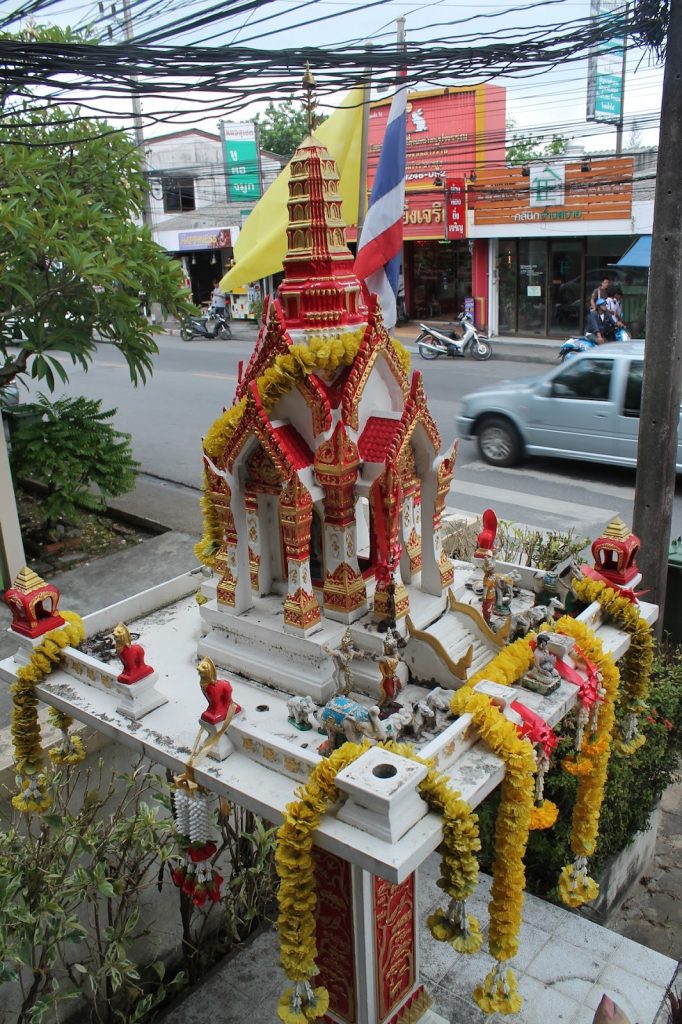
Thank you for reading
That’s it for this week! Please contact us with any feedback, question, or news item we’ve missed!



